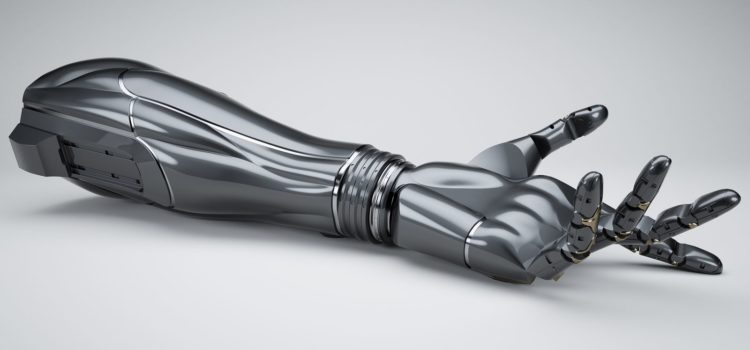

A New Step Forward in Bionics
Uncategorized September 4, 2018 Dave 0

The fine folks on Johns Hopkins Robotics Department are making unprecedented progress in “Mind Controlled Bionics” for persons with amputations and missing limbs. Using a breakthrough technology called Sensory Reinnervation, the human brain can easily and seamless interact and control the attached robotic limb. With this great technology though raises evolutionary and ethical questions on what the future holds. What can we expect as we close the gap between man and machine?

A New Step Forward
With Sensory Reinnervation, the brain can now be linked to a robotic prosthetic not just through control, but the person can actually have feeling in the robotic limb. In the case of Melissa Loomis, she lost her arm to a racoon bite. After loosing her limb, Melissa was the perfect candidate for the Sensory Reinnervation program. By way or surgery, Melissa’s nerves in her arm were re-routed to inside layers of the skin and the robotic prosthetic is attached accordingly. This gives Melissa feeling all the way down to the fingertips of the robotic limb and ultimately better control and a better quality of life. After the procedure, Melissa is now the only person in the United States that has feeling and almost full control in a robotic limb. This makes her truly the nation’s first Bionic Woman…

Summary
As we get more advanced in neurorobotics, questions will be raised. Can a bionic arm, out class a real one? Will we be able to simply “swap out” an old limb for a shiny metal one? As robotics evolve, we surely will evolve with it. As of now, these robotics are limited to medical use only. But as they progress and become smarter, stronger, and more advanced will other people want them? Lawmakers have already begun to bring up the issue that as humans become more mechanical, laws will have to change and reflect how we look at privacy and domain over these augmented bodies. Another issue is hacking. Can these limbs be hacked and ultimately controlled by someone else. Perhaps controlled to do things against the wearer’s will? These questions will surely arise as we step into uncharted territory in human evolution. It’s important to have the foresight now and look at safeguards for the future and posterity.











No comments so far.
Be first to leave comment below.